Recently, I met up with a retired teaching friend who now volunteers with the G.R.O.W. Project at Inverness Botanic Garden. She kindly gave me a behind-the-scenes tour of the project which includes several poly tunnels and composting areas, tool sheds and other exciting areas.
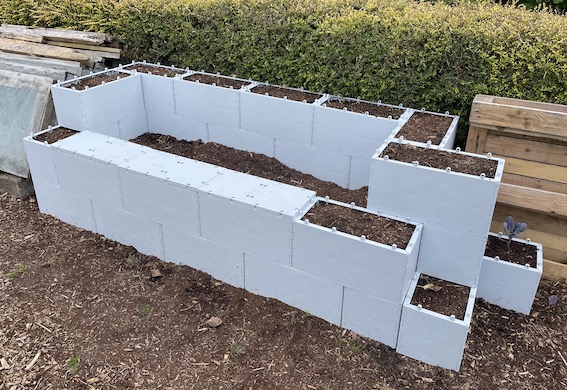
Immediately I noticed what looked like Duplo® being in the process of being made into a raised bed. My curiosity was piqued. The blocks were being filled with excess rubble and then the top layers had home-made compost added.
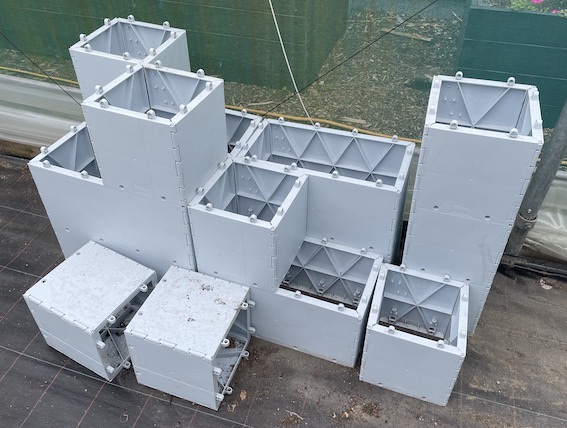
The block come in several basic sizes. They are interlocking at the top and bottom. Because each piece is standalone, it means that there is a lot of flexibility in how these can be put together. The photo above shows some of the empty blocks. They come flat packed and are put together with a rod inserted into a corner. They are very simple to construct. Children could assist with supervision.
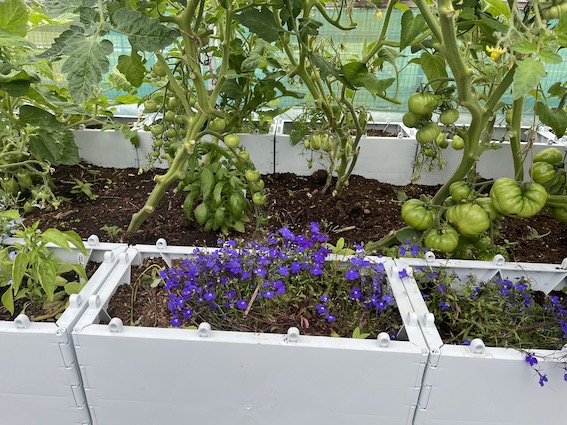
Now, as these blocks will remind children of Lego®, it then means that children can even do a design in miniature, working out how many blocks are needed for a planter, shed or other project. The QUICKBLOCK® website gives some examples of possibilities, but as yet doesn’t do the product educational justice. This resource is potentially brilliant for schools and nurseries.
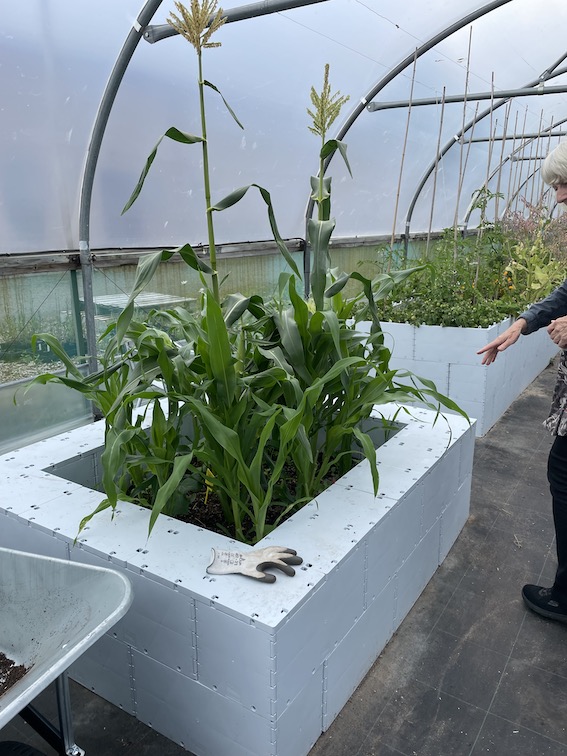
Inside the poly tunnels, there were more examples of how the QUICKBLOCKs® could be used as raised beds.If you look, the blocks also come with top panels if needed. So this is why seating areas and block tables can also be created.
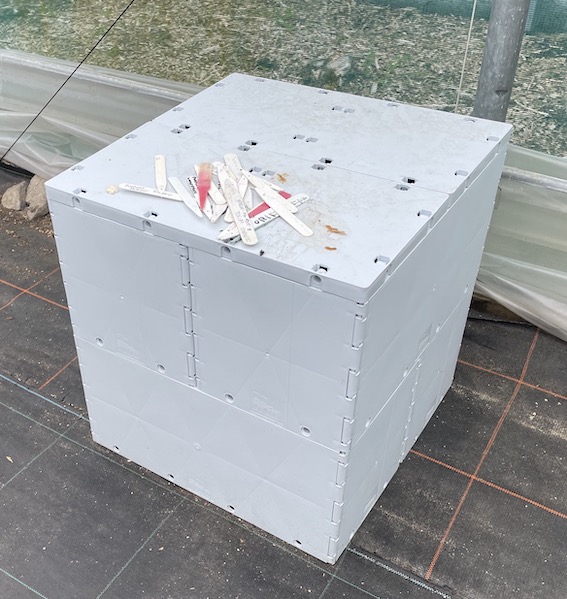
The height of any item is easy to work out. It’s possible to make sheds but also you can have a raised bed as high or as low as is needed to meet the needs of children. I believe it may also be possible to add in planks so that there are wheelchair accessible places – but check with the QUICKBLOCK® team in case I’m mistaken.
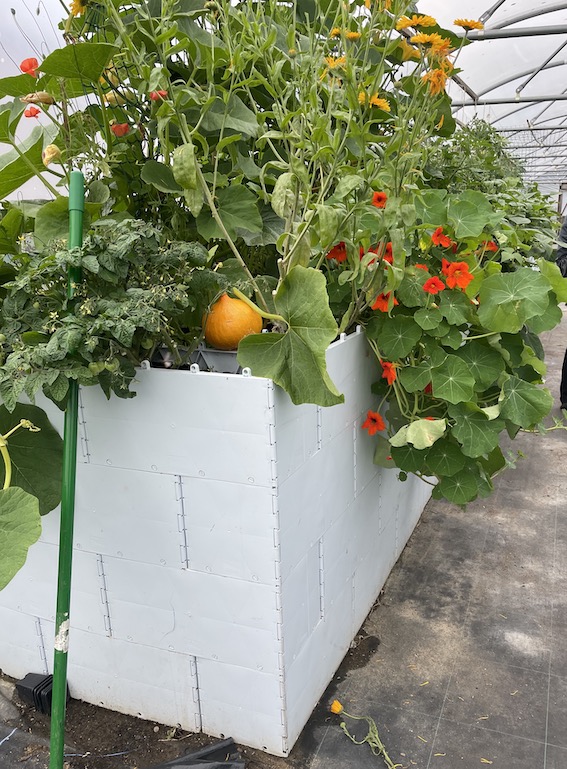
I love the possibilities. Immediately you can build the size of a planter, sand pit, pea gravel pit, play pit to any size you want. It could be very useful as temporary borders or to partition different parts of a playspace. The product is made from recycled polypropylene. So it is good to see plastic being re-used. In this way they remind me of some manufactured compost bins. Whilst the blocks aren’t uber-expensive, they are definitely not for the skinted school or early years and childcare setting. However they do look very robust and I love that they can be put on top of asphalt. Also, you can experiment with the layout and shape. They come in olive green as well as light gray.

Some disclaimers:
- This is not an affiliate post. The QUICKBLOCK® company have no idea I’m writing this.
- I’ve not seen these blocks in an educational setting. I’m just seeing the relevance and potential. I’d love to know from any school, nursery or out-of-school care club if they have purchased and are using these.
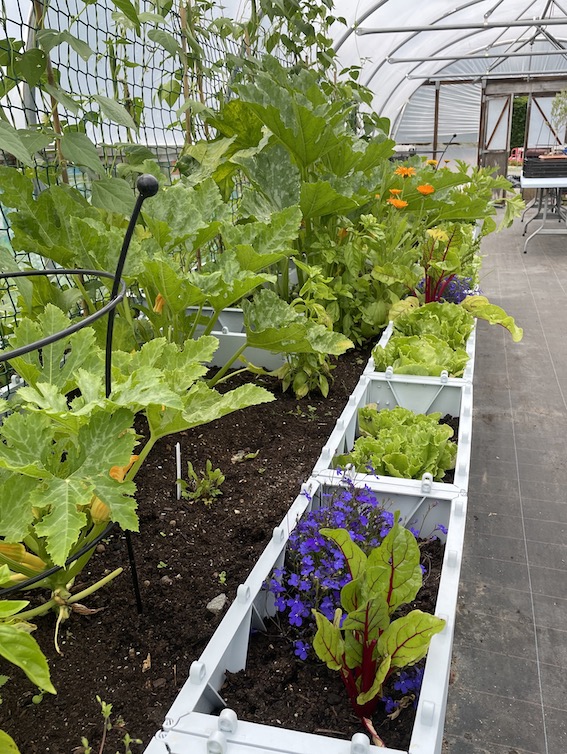
What do you think? I think it’s an amazing example of a loose part that moves into the design process as per Simon Nicolson’s original article about the Theory of Loose Parts.
Finally, to learn more about the G.R.O.W. project, the Beechgrove Garden BBC Episode 11 visited back in June 2022. You can see the QUICKBLOCKS® in use. The feature begins just after 21 minutes into the programme.






























These look great Juliet, just the sort of thing I would certainly use to design with children! as you know I have done similar, and using lego, with various materials in my school workshops.
Are you going to get involved in helping the company to write teaching/learning resources? (If you need a landscape architect input I’d be happy to add my thoughts?)
All the best
Felicity
Hi Felicity – thanks so much for your comments. At the moment I’ve no plans to work with the company as I’m not connected at all. I just saw the blocks in use and loved their versatility! However I’ll let them know about you xxx
That’s kind, thanks Juliet!
Hello Juliet,
Firstly, thanks very much for the blog – we love that you are so excited about our product and it’s brilliant to hear your thoughts on its application in education. We’re particularly proud of the GROW project in Inverness and glad you had a chance to see the raised beds in full bloom!
It would be great to chat through this area in more detail if you have some time?
Felicity, I’d also be really keen to have a chat with you on some of your ideas too?
Many thanks
Andrew